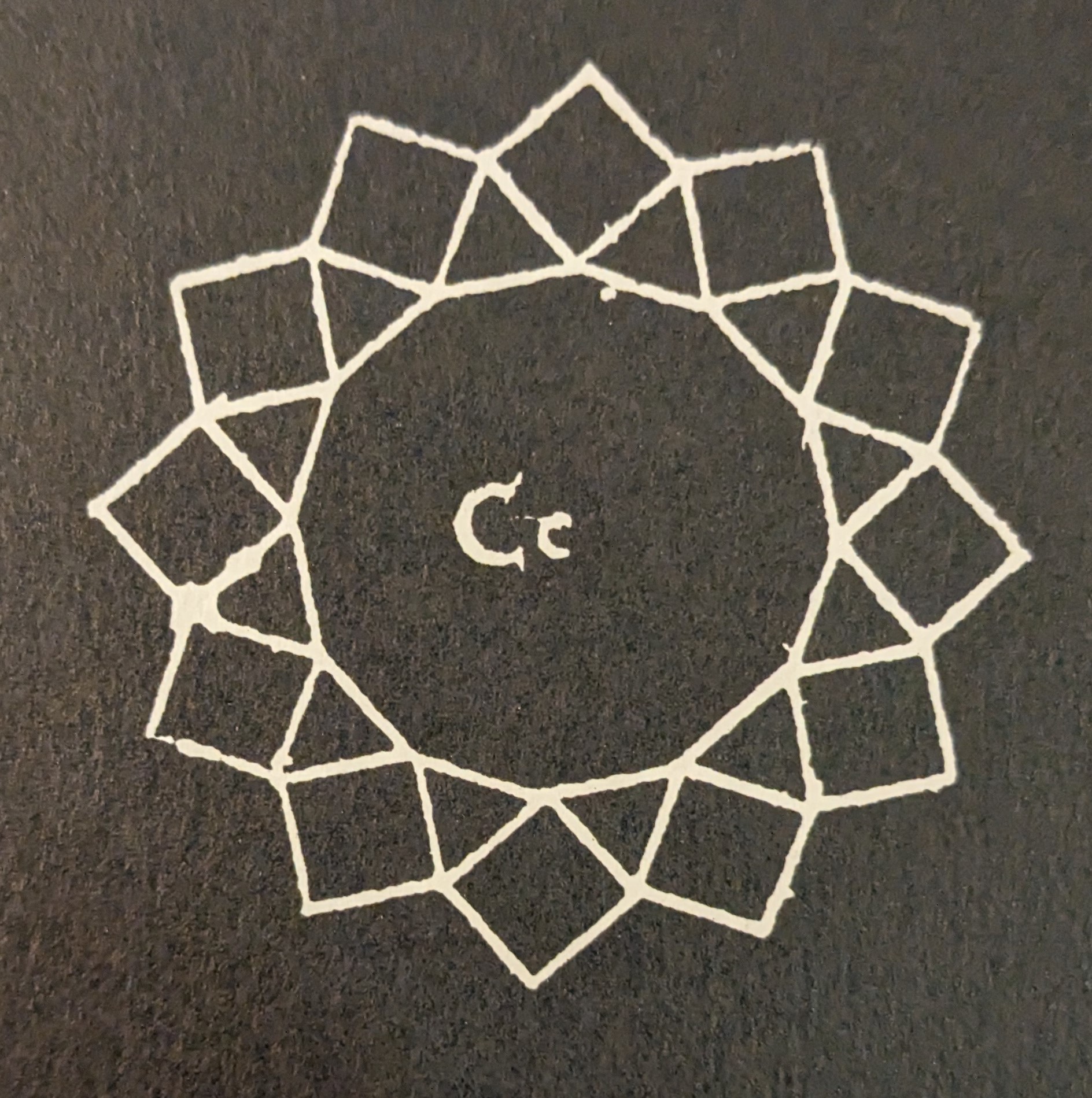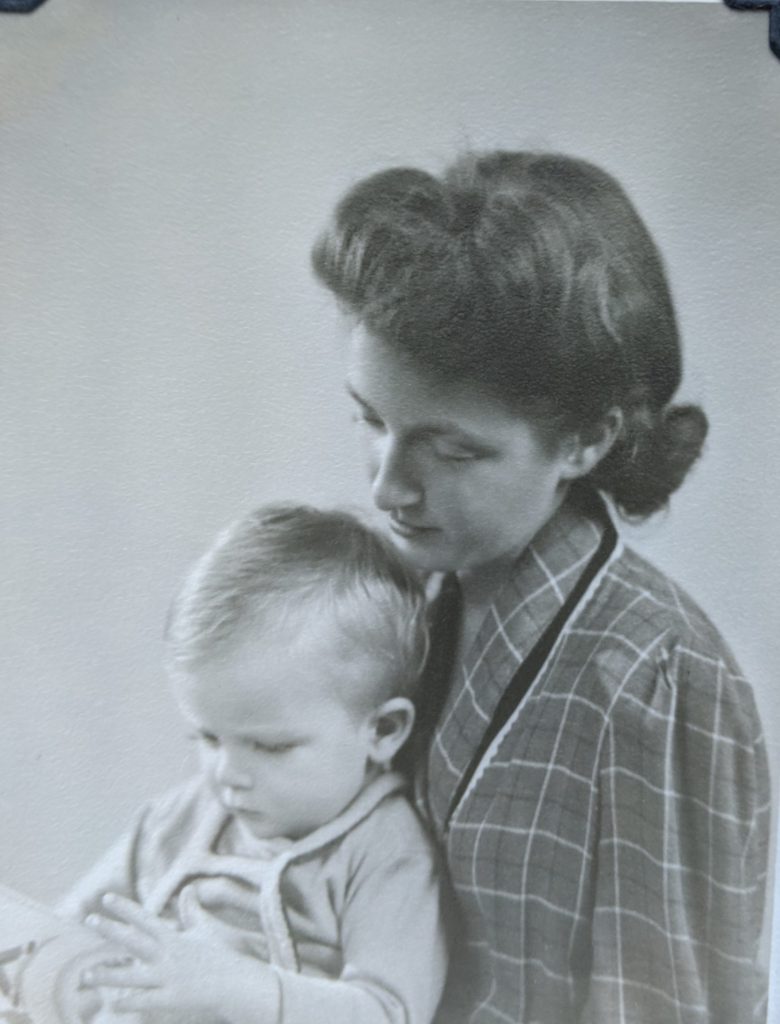
1943 Highland Park, Illinois, USA
Maternal grandparents knew people in this posh suburb of Chicago. Have not been back since.
Family tree.
1946-48 Nuremberg, Germany.
My father was an Army sergeant in the occupation force, primarily a member of the military band.
We lived in a semi detached house on Haesselerstrasse. This aerial photo of the US military General hospital, 1945, includes our house in the lower left corner. The hospital has since been replaced by a residential development. Some houses had bomb damage but it was still essentially a German neighborhood with a couple of American families. I attended a German kindergarten, but have little memory of it. I have a better memory of being taken to the local cinema from time to time by my parents or the German nanny they hired.
Peddlers, probably black market, came door to door. I recall having loads of toys, my parents taking advantage I assume of the high reputation of German made. Some are in pictures taken by my father.
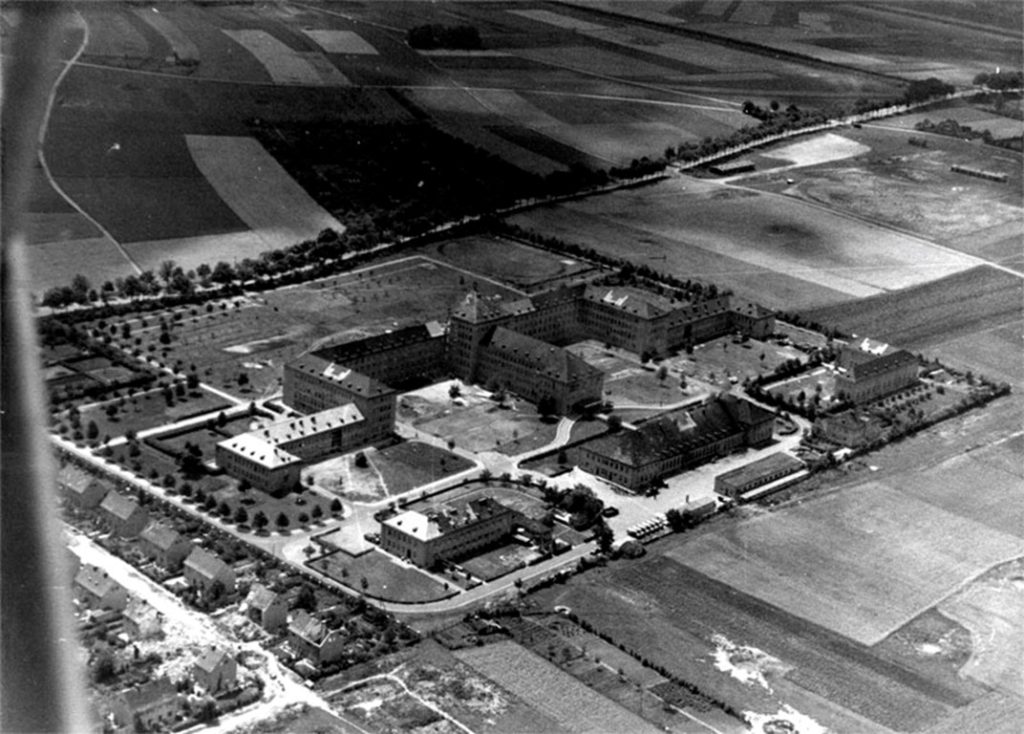
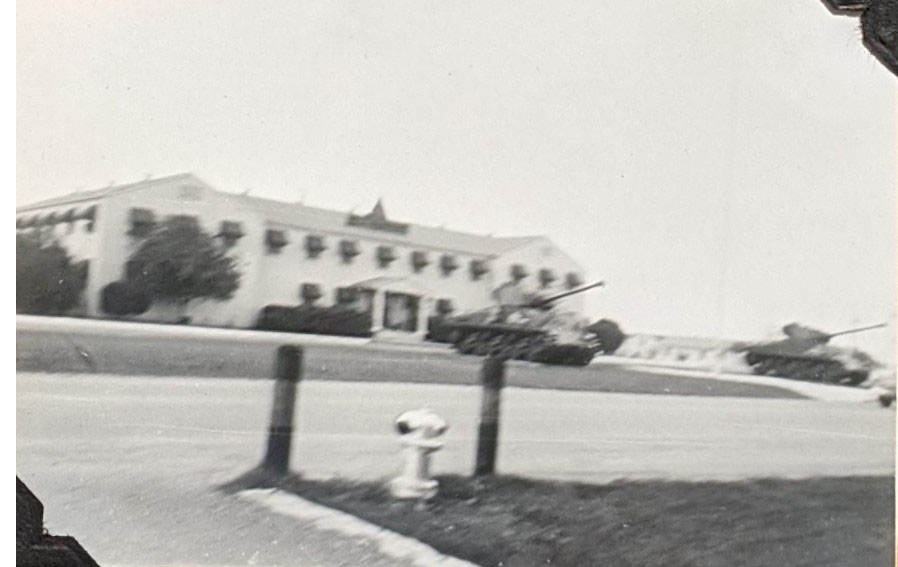
1948-57, Ft. Hood (now Fort Cavazos), Texas.
Returning to the States, kindergarten through elementary school was at Ft. Hood and Rancier Junior High School in nearby Killeen. The year Elvis Presley arrived for basic training, my new stepfather joined the US Air Force and we moved to England.
1957-62, Norfolk, England.
After part of a year at Sculthorpe USAF airbase in Norfolk I changed from the base school to a nearby English one, Fakenham Grammar School, 1958-60. This was thanks to the suggestion of my exceptional Sculthorpe science teacher Kathleen (Roan) Melander who had connections with the local school authority. The latter’s psychologist after an interview determined that I “could benefit” from a grammar school regime. Doing well at FGS in physics and having literary interests, my English master, Michael Robson (fresh from Oxford, just published a novel, since then a writer for radio and screen) recommended C.P. Snow’s writings.
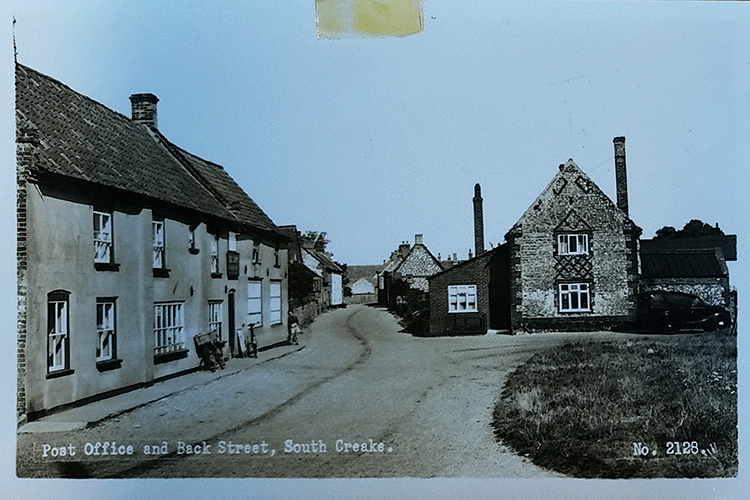
In order to continue my reasonably successful experience in the English examination system, after my stepfather’s tour of duty I continued at Wymondham College, a state boarding school (the only one I believe at the time in England) in Norfolk, 1960-62. A-level exams were passed in Pure Mathematics, Applied Mathematics, and Physics. During school holidays, not able to return home as easily as most of my fellow students, I usually stayed in residence when the campus hosted a variety of further-education meetings. These brought me into contact with support staff and administrators, some of whom became life-long friends. In addition there were memorable visitors that I became acquainted with:
F. Lincoln Ralphs, chief education officer for the county and founder of the school who made it a point of pride and remembrance that the initial housing for the college was set up by the US Army as a hospital to receive WW 2 wounded from the European front.
Charles Raven , who first influenced me to study Teilhard de Chardin. In 2005 I had a conversation with John Smith, a manager in the Heywood Hill Bookshop in London. In response to my query (urged on me by Harry Lucas!) he said that they were not an appropriate place for stocking the RL Moore biography. That was no surprise, but he went on to lament how people nowadays did not have broad interests that would encompass history of science and mentioned that he was a grandson of a theologian who wrote a biography of John Ray, Charles Raven! (He also knew C.P. Snow who came to the bookstore looking for books to review. Snow was friendly in spite of Raven’s ambiguous feelings towards him because of Snow’s depiction of him in The Masters.)
Richard Acland may have been selling his book, Why So Angry? in connection with his talk at the college since I have a copy signed July 1961. I recall being encouraged to visit his son who had been travelling with him but had come down with something that laid him up alone in sick bay.
Oliver Zangwill, after a talk and an informal group conversation, inspired me to read his book, An Introduction to Modern Psychology, and consider psychology as an interesting field to enter.
George Martini (I believe the name was George), whom I knew as the further education officer at Sculthorpe, spoke at the college during the summer of 1961. He invited me to spend Christmas with him and his family. An American anglophile, he had joined the Church of England and become a churchwarden in the parish of Sandringham. The village Christmas Carol service was at the West Newton church, where the Martinis lived in the old vicarage. As his guest with his family in the warden’s front pew we faced towards the royal family. On Christmas morning we had the same vantage point during the more intimate service in St. Mary Magdalene’s on the Sandringham estate. Prince Charles left early through the chancel exit, the BBC later reporting that he had perhaps overindulged in Christmas treats.
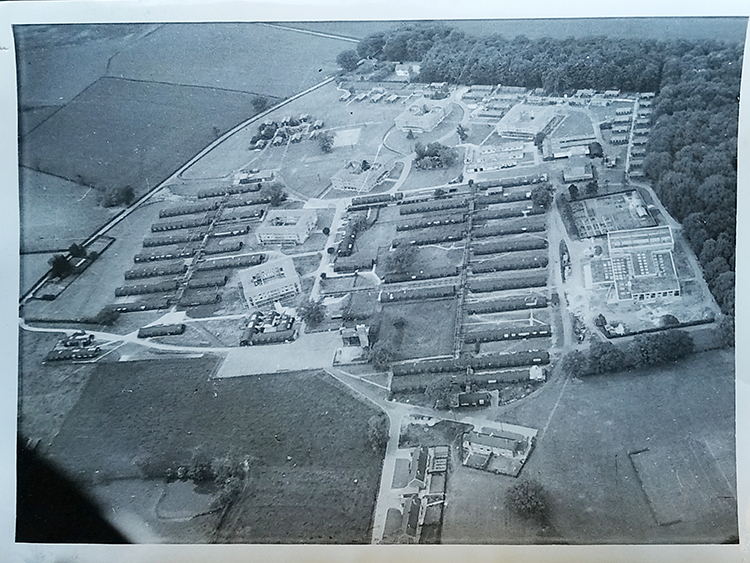

1962-63, Croton-on-Hudson and New York City.
On returning to the US there was a year spent assessing future options while staying with one of my uncles, Perry O. Crawford Jr., and his family. While working in his Imaging Project at IBM I attended mainly evening classes at New York University in 1963 and somehow managed to include joining the NYU debate team.
Esther Phillips was one of my mathematics instructors, a fact which I was slow to remember twenty years later when we were both working on the journal Historia Mathematica.
Another NYU memory was Ayn Rand’s campus visit and talk on “Businessmen: America’s Persecuted Minority.”
1963-75, The University of Texas at Austin.
Influenced by the Great Books programs at St. John’s and Chicago, and Paul Goodman’s The Community of Scholars, I aimed to stay with the fundamentals and concentrate on mathematics and Greek. Classics and Mathematics were regarded as strong departments. In the case of mathematics, however, my advisor, James Hurt, whom I stayed with as an undergraduate, steered me away from the R. L. Moore group. Only gradually did I learn that this contingent was largely responsible for what had been the department’s high reputation. Years earlier Hurt had taken a course with Moore and was not impressed.
After a B.A. in 1966 and M.A. in 1969, I came to realize I was always more interested in questions about mathematics rather than in mathematical questions. Though aware of philosophical/foundational topics, I was unaware that history of mathematics could be a subject of study until Hurt pointed me to Men of Mathematics by E.T. Bell whom he knew from university in California.
The graduate school dean was much in favor of interdisciplinary programs and so it was easy to get approval to design my own doctoral program in history of mathematics. While continuing to take mathematics courses, I became acquainted with professors and their courses that would be a part of the program: in the history department Alexander Vucinich (Russian science), in philosophy Ignacio Angelelli (history of logic), and, with a joint appointment in both departments, Robert Palter. (John Durbin in mathematics rounded out the full dissertation committee.) Palter’s dissertation at Chicago was on Whitehead’s general relativity theory and thus he knew about Hermann Grassmann. It was intriguing to me that Grassmann was mentioned at least once in heroic terms by Homer V. Craig in each of his classical tensor analysis courses and that there was an historical question about why Grassmann’s mathematical genius was unrecognized through most of his lifetime.
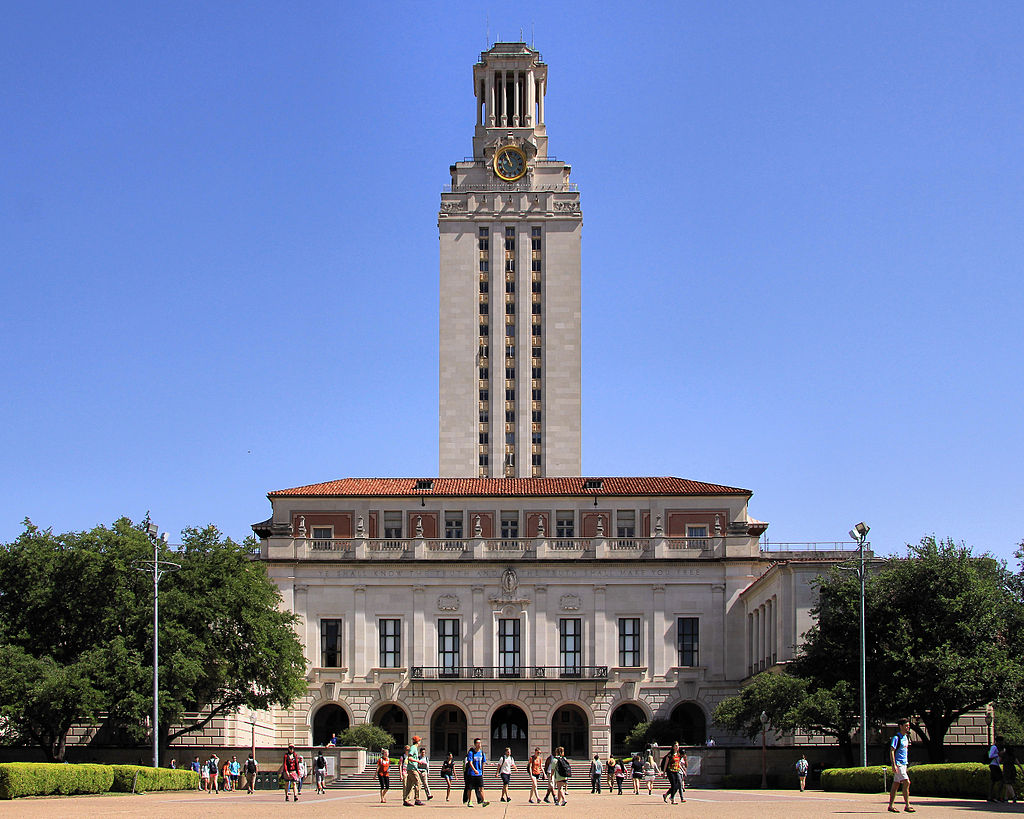
1972 Cambridge University
Freed from teaching thanks to a National Science Foundation graduate fellowship, 1971-74, I spent five months attending lectures and seminars at Cambridge, mainly those of Gerd Buchdahl who had been a regular visiting professor at Texas. As a fellow at King’s College he enabled me to get a room at 4 Newnham Terrace, where John von Neumann once stayed and which had a view of Silver Street bridge.
Most importantly I also got to know Thomas Whiteside and, in London, Ivor Grattan-Guinness.
In May 1972 in Nottingham I attended the first annual meeting of the British Society for the History of Mathematics.
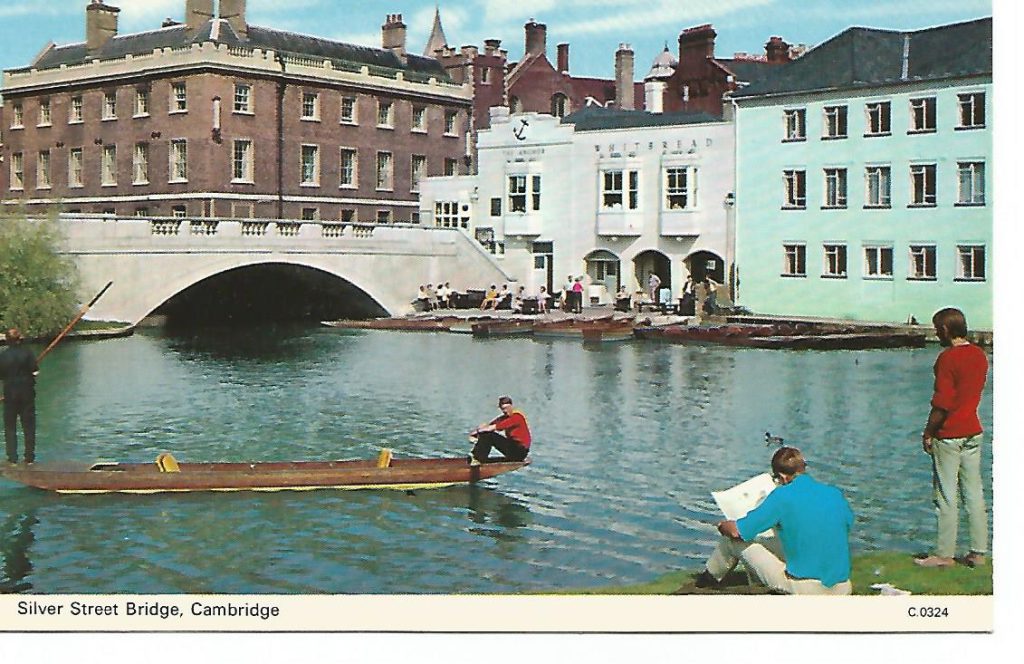
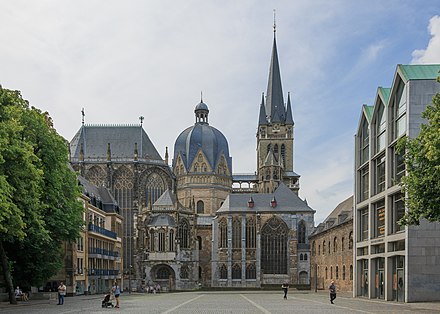
1975-77, Aachen, West Germany.
After obtaining a Ph.D. in 1975, on the recommendation of Angelelli I obtained an Alexander von Humboldt Fellowship for research in West Germany. Ostensibly to work with Christian Thiel at Aachen TU, it also provided the opportunity to travel to Stettin in Poland to see what traces there were of Grassmann.
1977-84, Humanities Research (now Harry Ransom) Center, Austin.
My first job at the university in 1963 was as a page in the Rare Books Library at 75 cents an hour. Undoubtedly there were higher paying jobs available but I liked volunteering in the libraries at Fort Hood and at Sculthorpe. Ultimately, in retrospect, doing what I wanted to do regardless of practicalities paid off in invaluable ways. The library’s development was a special project of the university president, Harry Ransom.
I became acquainted with Ransom in 1972 when he was Chancellor Emeritus with an office in the new HRC building, later to be named after him. In his pursuit of information about early university professors, he learned about me from the head reference librarian. After a chat he invited a contribution to The Texas Quarterly on George Bruce Halsted. Later he supported the R.L. Moore archival project and when the regents engaged him to do the official university history we kept in touch about my assisting him. (My professor friends did not think this a good idea. In any case, the project never got very far before he died in 1976.)
As a side employment, the HRC librarian, June Moll, recommended me as a genealogy researcher to Halsted B. Vanderpoel who had deposited family papers with the HRC. From 1972 to 1976 I made trips from time to time pursuing records in Paris, London, Salt Lake City and Amsterdam. (His wife’s history was the subject, but one off-topic discovery was that he was related, though somewhat distantly, to George Bruce Halsted.)
As better paying jobs came along in the mathematics department—grading and, as a graduate student, teaching—I still kept in touch with former colleagues at the HRC. This proved useful when I recommended to those handling R.L. Moore’s estate when he died in 1974 that his papers be preserved in the HRC. The idea that this could be the kernel of an historically valuable archive of the influential Moore school was soon picked up by others. Thanks to R.L. Wilder pointing out that it would be good for the two main mathematical organizations to preserve their records, the Archives of American Mathematics was established (and later moved to the Briscoe Center for American History on the other side of the campus).
The HRC director, Warren Roberts, a Ransom protégé, was open to all of these developments and in 1977, the history of science job market being what it was, I was happy that he agreed to furnish me with a low-paying and very tenuous position helping to organize these collections. He also agreed to my taking on the title Curator of the History of Science Collections. Ransom had given almost as much attention to developing this area as he had to English and American literature, resulting in one of the richest such collections in the country. Ransom also had had a curator who left some years earlier.
In a way it was a return to my undergraduate status in a job barely above volunteer work. Where else, though, could I have come to know C. P. Snow, Iris Murdoch, John Bayley, and to meet Emilio Segre, Jerome Bruner, and Shepherd Mead? It was also a time when I was a part of Ilya Prigogine’s social group and had the collaboration of John Wheeler on an Einstein centenary celebration.
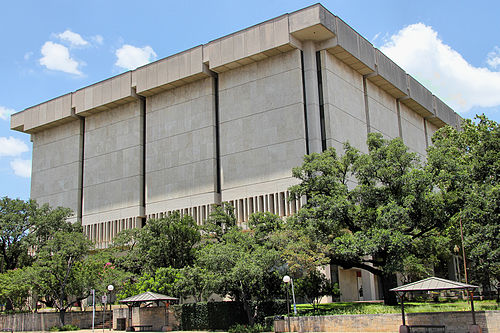

1984-97, Hamilton, Ontario, Canada.
After a rocky series of HRC acting directors, a James Joyce fan from Southern Methodist University decided that history of science had no need of a curator, however little it cost. Thanks to Ivor Grattan-Guinness I was alerted to the need for an historian of mathematics on the Bertrand Russell Editorial Project at McMaster University. The early Russell, when Grassmann was one of his readings, fitted in with my background. As one of the people I admired along with Snow in English schooldays amid anti-nuclear protests, it was a privilege and treat to engage with Russell’s papers and become acquainted with his daughter Kate Tait in Cornwall and biographer Ronald Clark in London.
One of my interests was helping with the electronic typesetting for the edition. To get some insight into the latest uses of computer applications to text I became a Visiting Research Fellow at the Centre for the New Oxford English Dictionary and Text Research at the University of Waterloo for a month in 1989. This inspired me to go a bit further and obtain an M.Sc. in Computation in the Department of Computer Science and Systems at McMaster. My IBM uncle enjoyed hearing about the modern curriculum.
Before leaving the Russell Project I became a Canadian citizen. Thanks to a recent US Supreme Court decision dual citizenship was finally legally recognized.
1997-2008, Indianapolis, Indiana.
As funding became scarcer and the Russell volumes that I worked on were completed, it was fortuitous that a similar opening appeared in the Charles S. Peirce Editorial Project at Indiana University, Indianapolis. Once again Grattan-Guinness, also on their advisory board, made the connection. The period needing attention was much the same as covered during my Russell stint.
This renewed connections with Carolyn Eisele, the Peirce proselytizer, whom I met earlier through Max H. Fisch’s interest in Halsted. Through another Peirce follower, Paul Weiss, I met Weiss’s former Yale student William F. Buckley, Jr. I had heard Buckley speak in Austin in 1963 after my government professor, Wallace Mendelson, roundly attacked his right-wing crusade at Yale but told us we should go and listen to him.
The director, Nathan Houser, decided to retire earlier than he had led me to believe he would when I joined. I was questioned by the dean’s office as to my retirement intentions. Since I had been receiving invitations from Harry Lucas to return to Austin I decided it was evidently time to leave. Since Nathan and I left nothing has been produced by the project.


2008- , Austin.
While working in the 1970s on the Moore School project and helping former Moore students Lucille Whyburn and John Worrell in an effort to preserve the Moore home, we were in touch with Harry Lucas, Jr., a student from the 1950s.
As the owner of a petroleum investment company, he had the financial means to accomplish much and did help in handling Moore’s estate after he died in 1974. However, he stepped back from the effort to preserve the house.
Now he decided, after consulting with others, that the time was right to deploy his Educational Advancement Foundation (EAF) in sustaining his mentor’s teaching method. He acquired the Moore house and the foundation sponsored conferences aimed at supporting improved teaching practices. For a number of years EAF also supported an archivist devoted exclusively to the Archives of American Mathematics.
I returned to Austin to join EAF as a trustee and worked within Lucas’s rather ad hoc environment and, with other dedicated workers such as Norma Flores, continued until the foundation essentially ended its educational mission with Lucas’s death in 2022.
Supporting the Archives of American Mathematics with an endowed archivist position is now a main priority.
